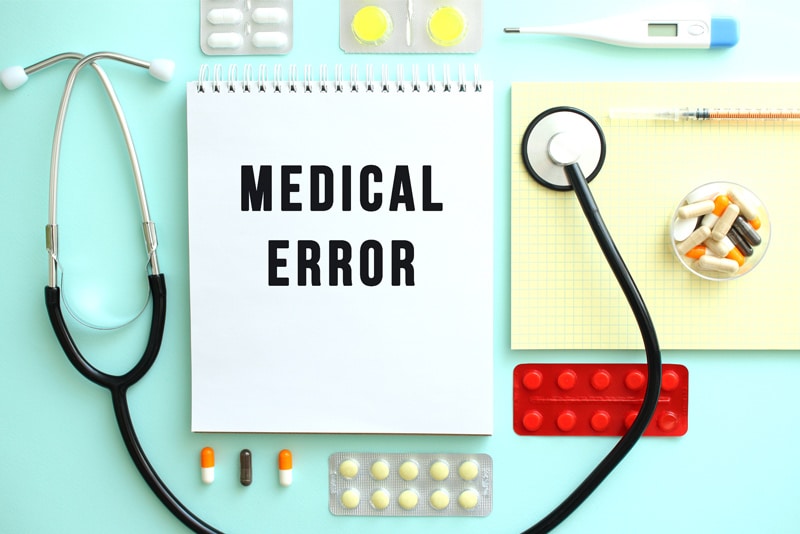
Complete and accurate medical records ensure that patients receive the right care at the right time. Accurate records provide all relevant healthcare professionals with the information needed for decision making. In addition to supporting billing decisions and ensuring physicians are correctly reimbursed, proper record-keeping offers protection from lawsuits. Medical transcription services are essential for producing accurate patient records, as they meticulously convert physician dictations into precise text format. In fact, close attention is crucial to avoid errors that that can prove costly for both physicians and patients. Let’s take a look at the serious errors that can occur in medical transcripts.
Serious Medical Transcription Errors to Watch Out For
Entering wrong information: Entering an incorrect value is one of the most common errors. This includes a wrong dosage, measurement, wrong dosage, measurement, patient detail, or medical terms. For example:
- A medication dosage entered as “10mg” instead of “100mg”
- Typing “hypertension” instead of “hypotension or “affect” instead of “effect”
- Entering the wrong date of birth or medical history detail
- Errors when converting between different measurement units (e.g., milligrams to grams)
- Misplacing decimal points or incorrect use of commas in large numbers can alter the intended meaning of the data.
Such errors typically occur due to the transcriptionist mishearing dictation, making typos, or confusing similar sounding words. Physicians may also mumble, talk too fast, or use unclear pronunciation when dictating. Wrong data entry can potentially have significant consequences for patient care.
Patient ID mistakes: Every patient is assigned an identification number. Accurate identification of patients is crucial for patients who are non-communicative or are confused, patients or residents who require a special diet, to label containers used for blood and other specimens, and so on. Wrong patient identification hinder patient safety, cause detrimental healthcare outcomes, create opportunities for medical identity theft, and lead to patient data integrity failure, according to Patient Safety & Quality Healthcare (PSQH) article.
Some transcription platforms add names automatically, but others require it to be manually entered. To avoid an error, the medical transcriptionist should confirm that the name on the report is the same as what’s dictated. If it is absent, the patient’s name should entered correctly.
Omission in dictation/missing parts: Omission of important dictated words is another serious mistake. All words in the audio recording should be typed in, with special attention to important words relating to symptoms, diagnosis, and the treatment plan. To avoid omitting important words in the physician’s dictated report, an experienced transcriptionist will focus on accuracy and not speed. Phrases or words that are difficult to understand or not clear should be tagged and not omitted.
Confusion in medical terminology: Medical terminology includes confusing terms, abbreviations and variations. Medical transcriptionists, especially those who are new to the job, must be careful not to confuse medical terms. Misuse of medical terminology usually occurs with words that sound similar. Some examples include sac/sack; perfusion/profusion; cord/chord; BNP (brain natriuretic peptide)/BMP (basic metabolic panel); pharynx/phalanx; dysphagia/dysphasia. Experienced medical transcriptionists are knowledgeable about medical terminology and can identify medical terms, abbreviations, and phrases in dictated reports.
Wrong verb use and spelling mistakes: Back formation involves creating a new word by altering an existing word, usually a noun. Back formations are usually verbs but may appear as adjectives or adverbs. While back formations and false verbs are common in general communication but should be avoided in medical records. The Association for Healthcare Documentation Integrity (AHDI) gives examples of back formations that are considered unacceptable as: dehiscence-to dehisce; torsion-to torse; diuretics-to diurese.
Misspelled words: Spelling mistakes can cause confusion, impacting care with serious consequences. Words often misspelled include: abscess, adolescence, hemorrhoid, humerus, syncope, and syphilis. New terms, medications, equipment, or instruments may end up being spelt incorrectly since there are no reliable resources to verify them. Electronic spell checkers can be useful to correct spelling errors, but unfamiliar and new words should be flagged for verification.
Transcription reports with one or more critical errors or three or more major errors are considered unacceptable and rejected. Responsible medical transcriptionists are focused on provided completed files that are 99% accurate.
A medical transcriptionist should also refrain from editing a physician’s report if it changes the information, removes important details, or alters the original creator’s style. To promote clarity in communication, the Association for Health Documentation Integrity (AHDI) recommends editing as acceptable for the following:
- Grammar, punctuation, spelling, and similar dictation errors
- Slang words and phrases, incorrect terms, incomplete phrases
- English or medical inconsistencies
- Inaccurate phrasing of laboratory data
Errors in medication order transcription and verification can be serious. One study highlighted issues like omissions, inadvertent cancellations, duplications, and dose transcription errors, such as reversing doses or mischarting administration times (e.g., every 6 hours instead of every 8). The risks are heightened for chronically hospitalized patients undergoing multiple therapies, increasing the likelihood of medical errors throughout the medication process.
Maintaining specialty standards in reports is also essential. For example, oncology transcriptionists must be familiar with terminology related to red blood cell disorders, including terms for red cell morphology like spherocytes, anisocytosis, Howell-Jolly bodies, acanthocytes, megalocytes, stomatocytes, drepanocytes, and Rouleaux.
“Historically, care providers have relied upon the ability to dictate the details of a health encounter and have that “story” documented either by a transcriptionist or speech recognition technology (SRT) and an editor. As healthcare delivery moves toward a nationwide health information exchange network via electronic health record (EHR) systems, the ability to preserve the full story of patient’s health will be a critical consideration”, note the AHDI.
Ultimately, partnership between physician and documentation specialists including a reliable medical transcription company are key for capturing healthcare encounters and ensuring they are documented and formatted in a way that promotes clinical clarity and coordinated care.


